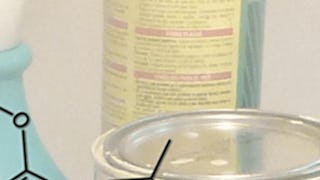Ce cours vous présentera la méthodologie de l'analyse du cycle de vie (ACV), un outil permettant d'évaluer l'impact environnemental des produits et des systèmes tout au long de leur cycle de vie, du berceau à la tombe. Après une discussion sur les possibilités et les limites de l'ACV quantitative par rapport à d'autres outils d'évaluation, nous détaillerons et mettrons en pratique chacune des phases de l'ACV. 1) La phase de définition des objectifs et du système définit l'objectif et la portée de l'étude, y compris la fonction du produit, l'unité fonctionnelle, le système du produit et ses limites. 2) La phase d'inventaire du cycle de vie quantifie l'inventaire des différents flux élémentaires d'extraction de ressources et d'émissions de substances traversant les frontières du système, en fournissant une vue d'ensemble des bases de données existantes. 3) La phase d'évaluation de l'impact du cycle de vie (LCIA) détermine les dommages causés par les impacts environnementaux multiples et fournit un aperçu des méthodes LCIA existantes. 4) La phase d'interprétation analyse les résultats d'une étude de cas LCA afin de fournir des recommandations pour des produits plus durables. Des actions de premier plan dans plusieurs secteurs industriels (agriculture et alimentation, automobile, produits de soins personnels et énergie) seront examinées par le biais d'études de cas pertinentes afin de démontrer comment une évaluation efficace du cycle de vie environnemental conduit au développement de nouveaux produits.

Profitez d'une croissance illimitée avec un an de Coursera Plus pour 199 $ (régulièrement 399 $). Économisez maintenant.

Analyse du cycle de vie
Ce cours fait partie de Spécialisation Aliments et produits sains et durables

Instructeur : Olivier Jolliet
13 031 déjà inscrits
Inclus avec
(73 avis)
Ce que vous apprendrez
Calculer l'impact environnemental des systèmes et des produits
Évaluer l'impact sur l'ensemble du cycle de vie du produit
Utiliser la méthodologie de l'analyse du cycle de vie (ACV)
Compétences que vous acquerrez
- Catégorie : Comptabilité des stocks
- Catégorie : Développement durable
- Catégorie : Analyse
- Catégorie : Simulation et logiciels de simulation
- Catégorie : Énergie et services publics
- Catégorie : Gestion du cycle de vie des produits
- Catégorie : Définition du champ d'application du projet
- Catégorie : Développement de produits
- Catégorie : Amélioration des produits
- Catégorie : Science de l'environnement
- Catégorie : Fixation des objectifs
- Catégorie : Conception durable
- Catégorie : Environnement
- Catégorie : Études de cas
Détails à connaître

Ajouter à votre profil LinkedIn
Découvrez comment les employés des entreprises prestigieuses maîtrisent des compétences recherchées

Élaborez votre expertise du sujet
- Apprenez de nouveaux concepts auprès d'experts du secteur
- Acquérez une compréhension de base d'un sujet ou d'un outil
- Développez des compétences professionnelles avec des projets pratiques
- Obtenez un certificat professionnel partageable

Il y a 6 modules dans ce cours
Cette semaine, nous examinons les performances des produits en matière de durabilité tout au long de leur cycle de vie, du berceau à la tombe. Après avoir analysé le grand nombre de produits chimiques avec lesquels nous sommes quotidiennement en contact, nous identifions le besoin d'une ACV et nous nous renseignons sur les motivations qui poussent à réaliser des ACV par rapport à d'autres outils environnementaux. L'étape de définition des objectifs et du système définit l'objectif et la portée de l'étude, y compris la fonction du produit, l'unité fonctionnelle, le système du produit et ses limites
Inclus
12 vidéos6 lectures4 devoirs2 sujets de discussion
Cette semaine, nous examinons les performances des produits en matière de durabilité tout au long de leur cycle de vie, du berceau à la tombe. Après avoir analysé le grand nombre de produits chimiques avec lesquels nous sommes quotidiennement en contact, nous identifions le besoin d'une ACV et nous nous renseignons sur les motivations qui poussent à réaliser des ACV par rapport à d'autres outils environnementaux. L'étape de définition des objectifs et du système définit l'objectif et la portée de l'étude, y compris la fonction du produit, l'unité fonctionnelle, le système du produit et ses limites
Inclus
12 vidéos7 lectures5 devoirs1 élément d'application3 sujets de discussion
L'inventaire du cycle de vie, la deuxième phase de l'ACV, quantifie l'inventaire des différents flux élémentaires d'extraction de ressources et d'émissions de substances qui traversent les frontières du système. Nous apprenons d'abord à construire l'inventaire du cycle de vie et à déterminer les flux élémentaires agrégés du berceau à la porte. Nous établissons ensuite le bilan énergétique et le bilan CO2 pour plusieurs produits, en identifiant les étapes dominantes du cycle de vie. Ce module donne ensuite un aperçu des bases de données existantes, décrit plus en détail la base de données ecoinvent très répandue, et illustre l'inventaire à l'aide d'un exemple simple de voiture.
Inclus
9 vidéos5 lectures5 devoirs3 sujets de discussion
Le chapitre nous présente enfin deux sujets particuliers d'importance : la répartition des émissions entre les coproduits et les possibilités offertes par la répartition entrée-sortie pour compléter l'approche de l'ACV des processus développée en détail dans ce chapitre.
Inclus
9 vidéos3 lectures1 quiz5 devoirs1 évaluation par les pairs3 sujets de discussion
L'évaluation de l'impact du cycle de vie (EICV) est la troisième phase d'une ACV. Elle utilise les données d'inventaire pour déterminer leurs impacts environnementaux et comparer les différents types d'impacts. Les méthodes d'évaluation des impacts sont simples à appliquer, bien que leur développement puisse être relativement complexe. Après une introduction au LCIA et aux différents impacts environnementaux, nous présentons d'abord les principes et le cadre du LCIA. Le module détaille et illustre ensuite, à l'aide de la méthode Impact World+, chaque étape de la méthode LCIA, c'est-à-dire a) la classification des émissions dans différentes catégories d'impact, b) la caractérisation des impacts intermédiaires, c) la caractérisation des dommages (point final) et les étapes optionnelles d) de normalisation et e) de pondération. Le module se termine par une vue d'ensemble des méthodes LCIA existantes et des efforts de recherche actuels pour parvenir à une méthode de consensus global.
Inclus
16 vidéos1 lecture5 devoirs2 sujets de discussion1 plugin
Ce chapitre a pour objectif de vous guider dans l'interprétation des résultats, dans l'implémentation d'une ACV dans le logiciel SIMAPRO et dans la classification environnementale des produits. Après avoir décrit les grands principes d'interprétation, nous illustrons les étapes de l'interprétation à l'aide d'un exemple d'ordinateurs de bureau et d'ordinateurs portables. Nous discutons ensuite des stratégies de vérification des résultats de l'ACV, et nous identifions et discutons les principales incertitudes dans les résultats de l'évaluation de l'impact du cycle de vie, en l'illustrant par l'exemple du séchage des mains. Nous réalisons ensuite un exercice de tutorat SIMAPRO, en mettant en œuvre l'exemple du sèche-mains dans SIMAPRO. Enfin, nous discutons d'une classification simplifiée des produits et fournissons des règles pour la conception durable des produits, en examinant également les stratégies de réutilisation, de recyclage et de (e-)déchets
Inclus
14 vidéos4 lectures7 devoirs1 évaluation par les pairs1 sujet de discussion
Obtenez un certificat professionnel
Ajoutez ce titre à votre profil LinkedIn, à votre curriculum vitae ou à votre CV. Partagez-le sur les médias sociaux et dans votre évaluation des performances.
Instructeur

Offert par
En savoir plus sur Santé publique
 Statut : Essai gratuit
Statut : Essai gratuitL&T EduTech
 Statut : Essai gratuit
Statut : Essai gratuitUniversity of Colorado Boulder
 Statut : Essai gratuit
Statut : Essai gratuitUniversity of Michigan
 Statut : Essai gratuit
Statut : Essai gratuitUniversity of Colorado Boulder
Pour quelles raisons les étudiants sur Coursera nous choisissent-ils pour leur carrière ?




Avis des étudiants
73 avis
- 5 stars
67,12 %
- 4 stars
15,06 %
- 3 stars
8,21 %
- 2 stars
2,73 %
- 1 star
6,84 %
Affichage de 3 sur 73
Révisé le 22 juil. 2024
This course was very useful, but be aware that having access to EcoInvent License is necessary for using Open LCA software , or have a SimaPro license to complete the LCI, LCIA.
Révisé le 18 déc. 2023
This course is amazing. A course about LCA with direct-simulation is a must! Clearly delivered, easy to understand, and challenging assessment and tasks.
Révisé le 6 févr. 2025
Great foundational course. There is room for improvement, mainly in the content and use of LCA software. An updated version of the course would be great.

Ouvrez de nouvelles portes avec Coursera Plus
Accès illimité à 10,000+ cours de niveau international, projets pratiques et programmes de certification prêts à l'emploi - tous inclus dans votre abonnement.
Faites progresser votre carrière avec un diplôme en ligne
Obtenez un diplôme auprès d’universités de renommée mondiale - 100 % en ligne
Rejoignez plus de 3 400 entreprises mondiales qui ont choisi Coursera pour les affaires
Améliorez les compétences de vos employés pour exceller dans l’économie numérique
Foire Aux Questions
Pour accéder aux supports de cours, aux devoirs et pour obtenir un certificat, vous devez acheter l'expérience de certificat lorsque vous vous inscrivez à un cours. Vous pouvez essayer un essai gratuit ou demander une aide financière. Le cours peut proposer l'option "Cours complet, pas de certificat". Cette option vous permet de consulter tous les supports de cours, de soumettre les évaluations requises et d'obtenir une note finale. Cela signifie également que vous ne pourrez pas acheter un certificat d'expérience.
Lorsque vous vous inscrivez au cours, vous avez accès à tous les cours de la spécialisation et vous obtenez un certificat lorsque vous terminez le travail. Votre certificat électronique sera ajouté à votre page Réalisations - de là, vous pouvez imprimer votre certificat ou l'ajouter à votre profil LinkedIn.
Oui, pour certains programmes de formation, vous pouvez demander une aide financière ou une bourse si vous n'avez pas les moyens de payer les frais d'inscription. Si une aide financière ou une bourse est disponible pour votre programme de formation, vous trouverez un lien de demande sur la page de description.
Plus de questions
Aide financière disponible,
¹ Certains travaux de ce cours sont notés par l'IA. Pour ces travaux, vos Données internes seront utilisées conformément à Notification de confidentialité de Coursera.

